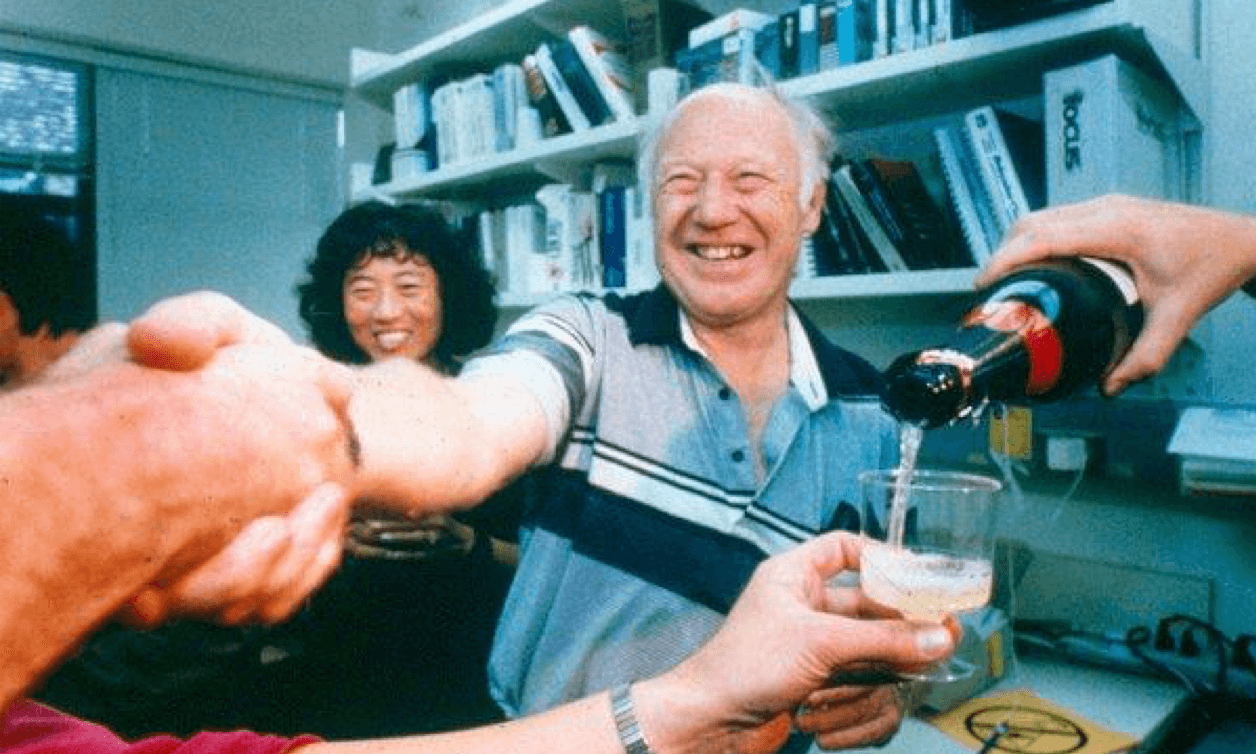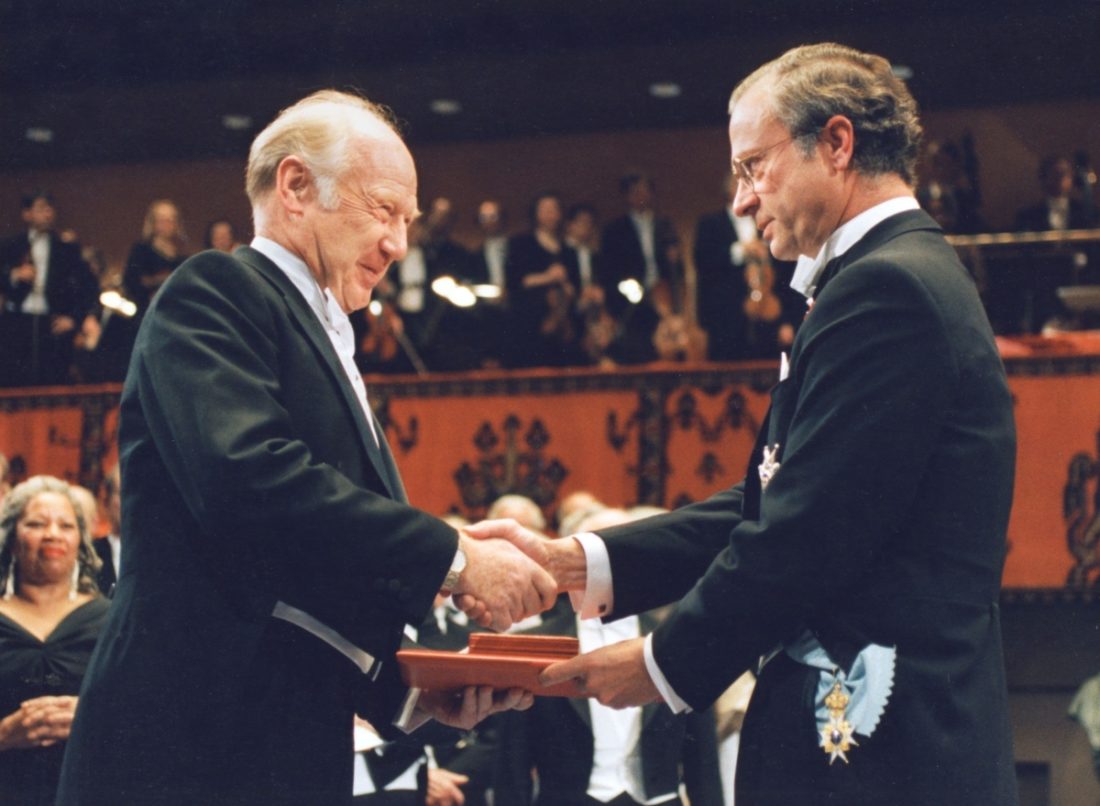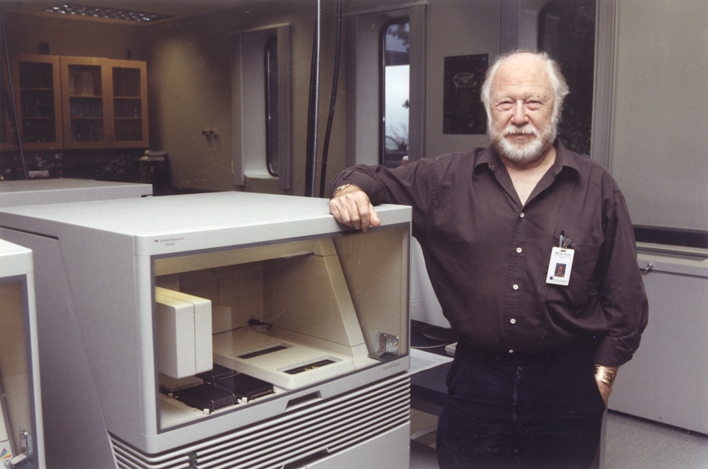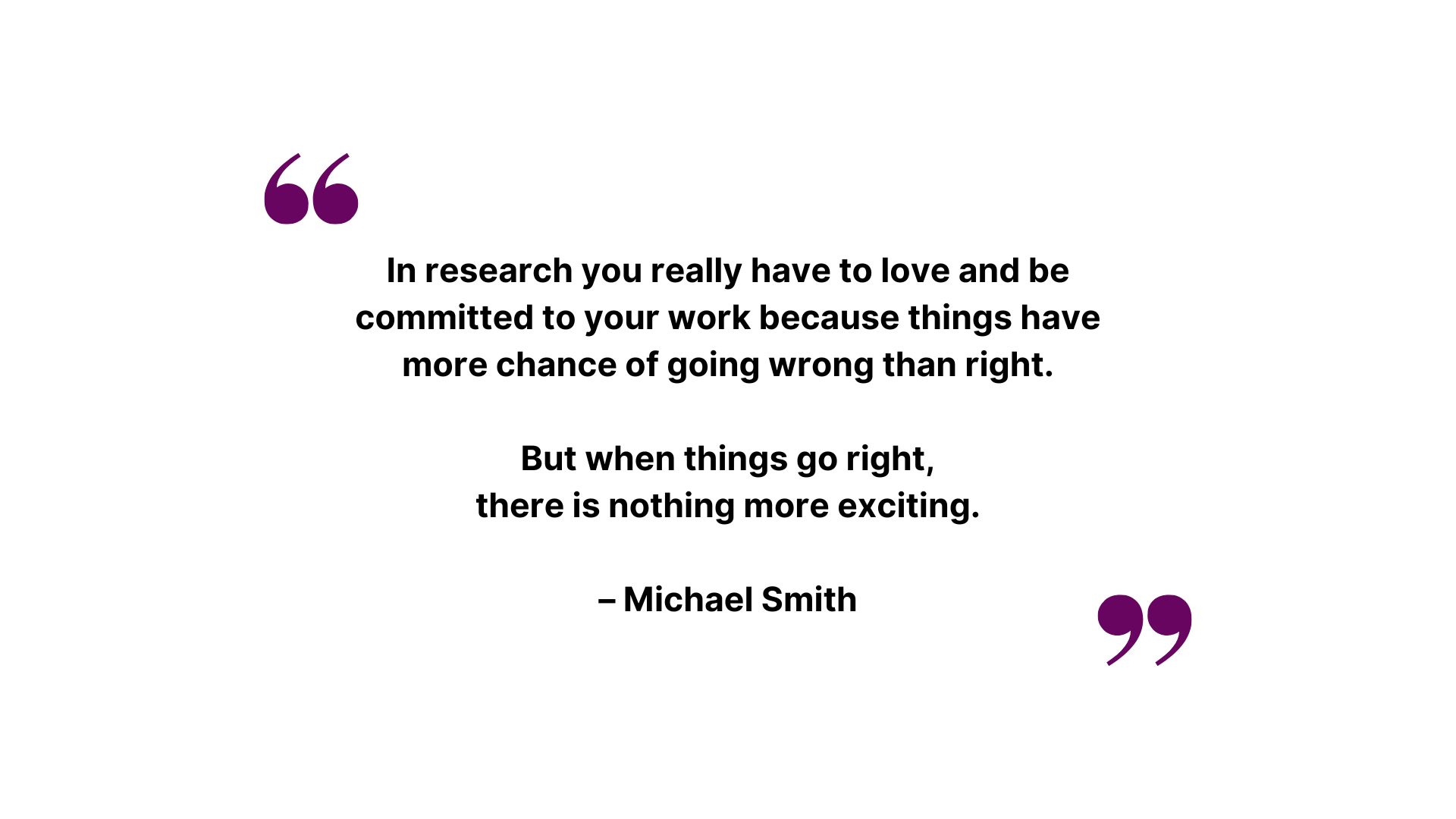Draft - JP - Dr. Michael Smith
In 1993, British Columbia’s Dr. Michael Smith (1932-2000), a pre-eminent chemist and molecular biologist, became BC’s first Nobel Laureate, earning science’s highest honour for his role in creating one of the foundational tools of genetic engineering. When he died in October 2000, a flood of tributes described an inspired scientist, a humanitarian, a humble and generous mentor loved for his humour, and a believer in BC’s potential to be a leading centre of health research.

1956
Smith came to BC from England in 1956 as a post-doctoral fellow. Working in the lab of future Nobel laureate Har Gobind Khorana, the young organic chemist developed a passion for molecular biology, with a particular interest in synthesizing oligonucleotides (short strings of nucleotides, the building blocks of DNA). By 1966, Smith’s talent and tireless work had earned him an appointment as a professor in the UBC Department of Biochemistry, which would become his permanent academic home. In the mid 1970s, Smith began work on the procedure that would be his greatest achievement. Site-directed mutagenesis is a genetic engineering technique based on the notion that targeted mutations may be induced at specific sites in a genome. Using synthetic oligonucleotides produced by his lab, Dr. Smith developed and refined a method for selectively engineering mutations in genes. This technique has become one of the foundations of biotechnology and has given rise to new diagnostic tests and treatments for genetic diseases.

1993
The magnitude of this work was recognized on the global stage with the awarding of the 1993 Nobel Prize in Chemistry (shared with American Dr. Kary Mullis).
Following his Nobel win, Smith devoted himself to supporting research in British Columbia. He generously pledged his $500,000 award to support science education and successfully challenged the provincial and federal governments to match his donation.

1998
In the late 1990s, Smith helped realize the dream of creating Canada’s first genomic research centre devoted to the study of cancer. His steadfast support for enhancing BC’s research potential led to the creation of new facilities and resources that have resulted in breakthroughs and enabled the training of talented young scientists.
Through his longstanding commitment to supporting emerging scientific talent, Smith helped to build BC into a hub of world-class health research, and the Michael Smith Foundation for Health Research, now known as Michael Smith Health Research BC, has continued to advance this research across the province.

2001
Established in 2001 and named in Smith’s honour, Michael Smith Health Research BC (Health Research BC) is BC’s health research agency, optimizing the provincial government’s investment in health research to attract, recruit and retain the talented people BC needs to advance health research and the knowledge economy, and improve the health of British Columbians.
We are proud to continue Dr. Michael Smith’s legacy with every researcher we support.

Watch now
Health Research BC is working towards a future where BC is recognized worldwide for its vibrant, coherent, inclusive, and globally competitive health research system, which improves the health of British Columbians, the health system, and the economy.
We’re determined to keep a good company vibe – friendly, personal, warm and welcoming.
Join us!

